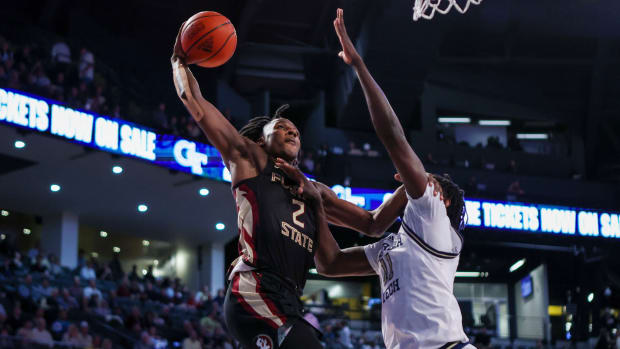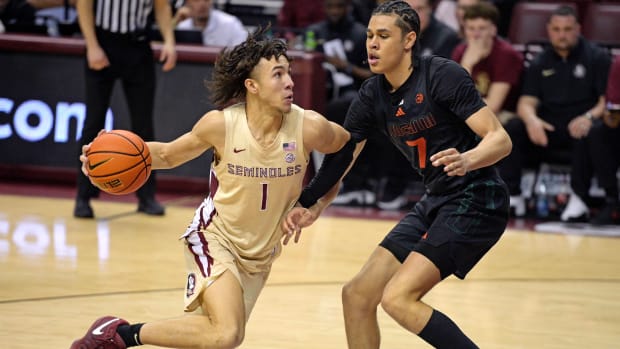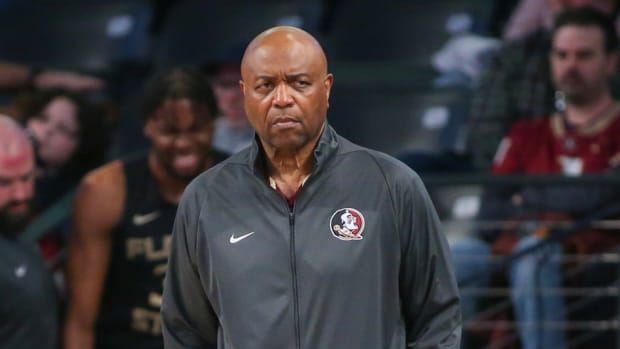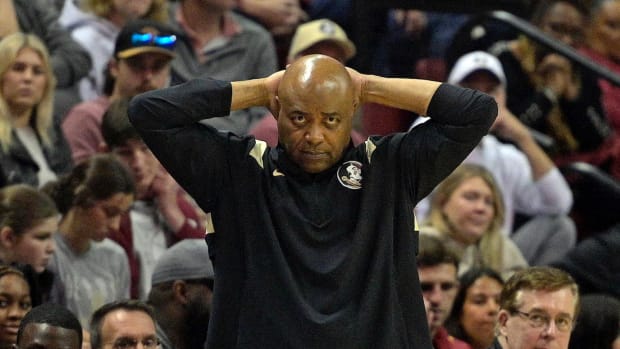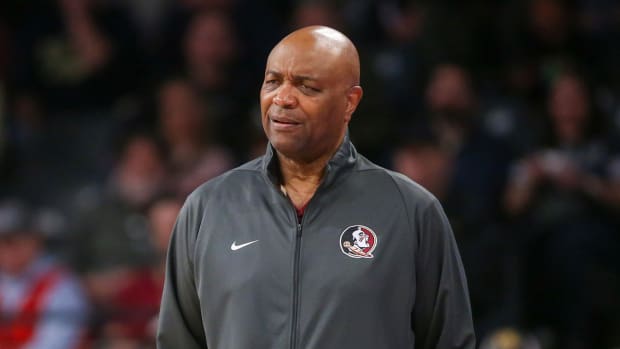Florida State Basketball: The History of the Center Position
The most important position on the basketball court is usually manned by the tallest guy on the team. He's often the strongest player and typically the slowest of foot. Florida State men's basketball has had mostly unspectacular centers since its first team in 1947, but for more than a decade now, FSU has recruited more length at every position, especially at center. We're seeing more 7-footers play in Coach Hamilton's system and thrive under assistant Stan Jones' mentoring.
The Genesis
That '47 team had 25 guys on the roster, more than half were under 6-feet tall, and nobody was over 6'4. The beginnings were humble, and although there were a few really good players, it took almost 20 years for a dominant center to emerge.
Prior to the 1964-65 season when 6'9 Dick Danford enrolled, no Florida State roster included a player over 6'7 and not until 1968 and the arrival of Dave Cowens did FSU have a truly dominant center. At 6'8, he was only the fourth tallest player on the team (three others were 6'9). Cowens didn't beat you with his height; he beat you with technique. He carved out the exact spot on the court that he wanted and allowed you to be anywhere else. (Reports of him keeping a file and whetstone in his locker and sharpening his elbows before each game are believed to be just rumors-- but who knows). Cowens was the heart and soul of those teams, and easily the best player.
Florida State basketball lost only three games during Cowens' senior season, but it was denied a shot at the NCAA tournament due to FSU being on probation. Cowens did later earn some rather nice “consolation prizes” such as an NBA MVP award, two pro titles, selections to three All-NBA teams, and enshrinement in the NBA Hall of Fame.
Despite playing in only one collegiate postseason game (during his first season on the team) Cowens is the benchmark for Florida State centers. No other post player has his combined scoring/rebounding numbers, and no team can match his 1970 team that lost just a trio of regular-season games.
The Succession
Lawrence McCray (6'11) inherited Florida State basketball's center position (along with a few teammates) from Cowens. McCray did make it to the NCAA finals in '72, but that was due primarily to the cast around him.
Alton Lee Gipson, at 6'10, transferred to FSU in '83, and for two years was FSU's best center since Cowens. Quick for such a big man, he averaged nearly 20 points, 7 rebounds, and 2 blocks per game.
In 1991, more than 20 years after Jacksonville's featured twin 7-footers (Artis Gilmore and Pembrook Burroughs), Andre Reid became FSU's next 7-foot center. Reid started only 1/3 of the games that he played in and generated pedestrian numbers. But FSU was on the map and competing for the big guys.
By 2010, three more 7-footers (Karim Shabazz, David Anderson, and Solomon Alabi) would play for Florida State. Alabi was clearly the best of the three but never lived up to his lofty recruiting rankings.
Following his arrest on drug charges, recruit Jon Kreft's career took a detour through the penal system and junior college, and he finally enrolled at FSU for the 2010-11 season. Though highly sought-after out of high school, Kreft never became the player most expected.
In 2012 the Noles signed 7'3 Boris Bojanovsky and 7'1 Michael Ojo. 7'0 junior Kiel Turpin was already on the team. Bojanovsky and Ojo became major contributors during their final two years. In 2015, the signing of 7'4” Christ Koumadje gave FSU two players at least 7'3 tall. In 2017 Ike Obiagu would join the team but play just a lone year before transferring. The 2019 squad added 7'1” Balsa Koprivica and 7'0” Dominik Olejniczak.
Up Next
Koprivica is Florida State's only returning center. He's not a 30-minutes-per-game player, suggesting that the team will play small for much of the game with a natural forward (RaiQuan Gray or Malik Osborne) no taller than 6'9 replacing him. Incoming freshman Quincy Ballard is 6'11 but quite raw and not likely to get a lot of playing time.
The Future
Look for FSU basketball to add a couple more centers before the 2021 recruiting ends, and like most all of the low-post signees in recent history, expect them to be projects who will take a couple years to develop.
It never hurts to dream big, so let's indulge for a minute and consider a college-ready prospect. The best center in the 2021 recruiting cycle is Chet Holmgren. At 190 pounds, he needs to add a lot of good weight to his 7-0 frame to be an NBA center, so there's a good chance of him not being a one-and-done player. His game is similar to Johnathan Isaac's so a move to power forward isn't out of the question either. FSU is on his radar, along with more than 25 other programs. Maybe Coach Hamilton and company can us their history with bigs to convince Holmgren that a couple years just 100 miles from Panama City Beach has a lot of appeal over more long, hard, cold winters in Minneapolis.

